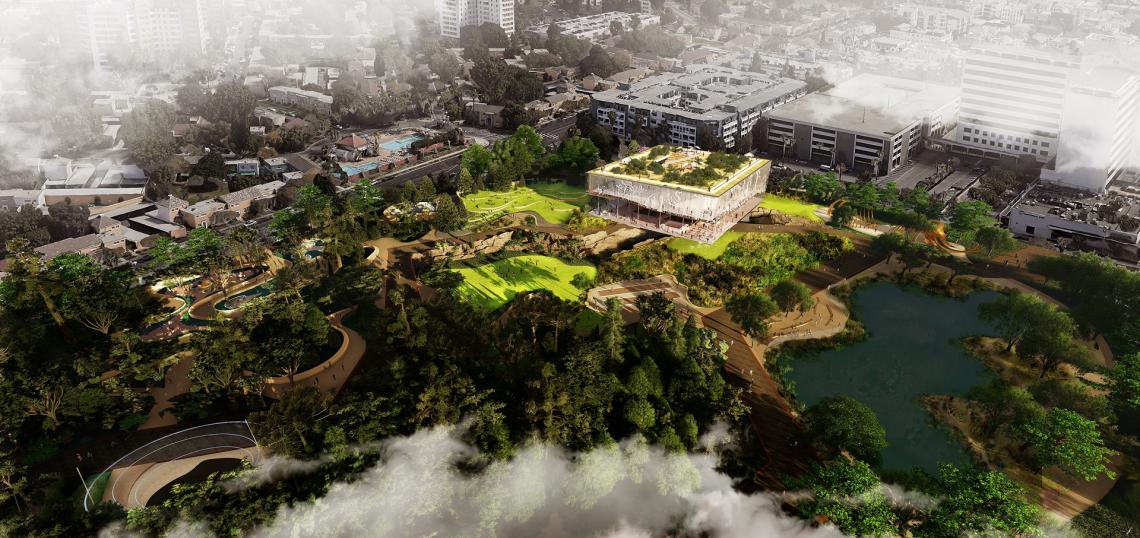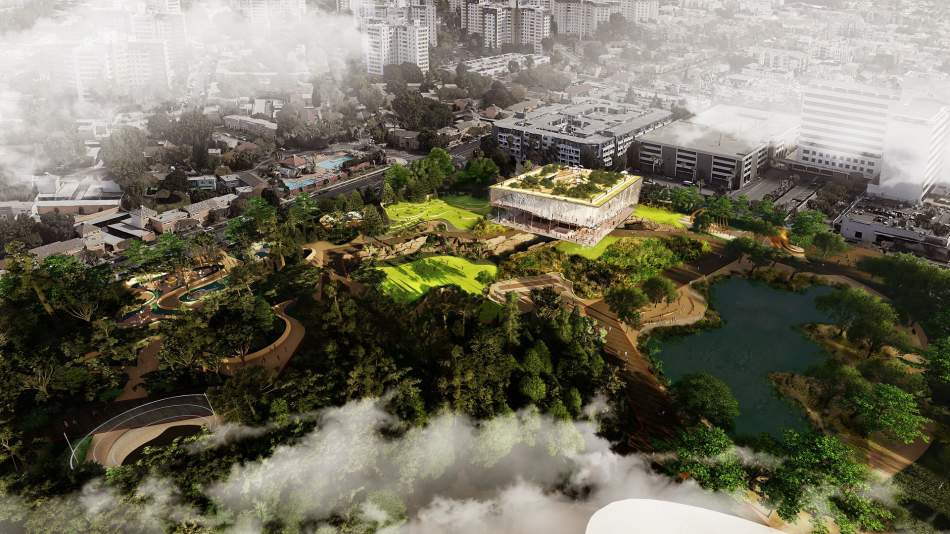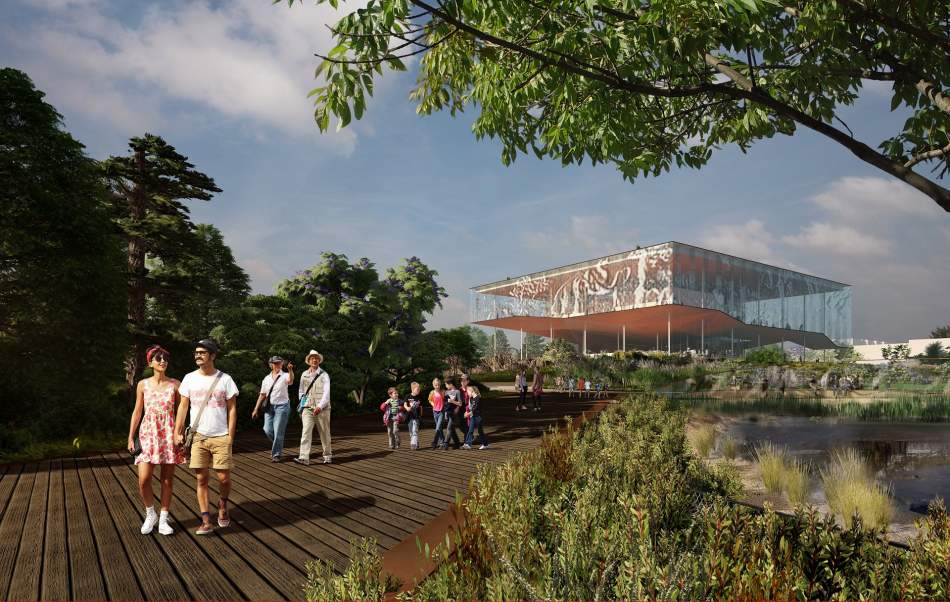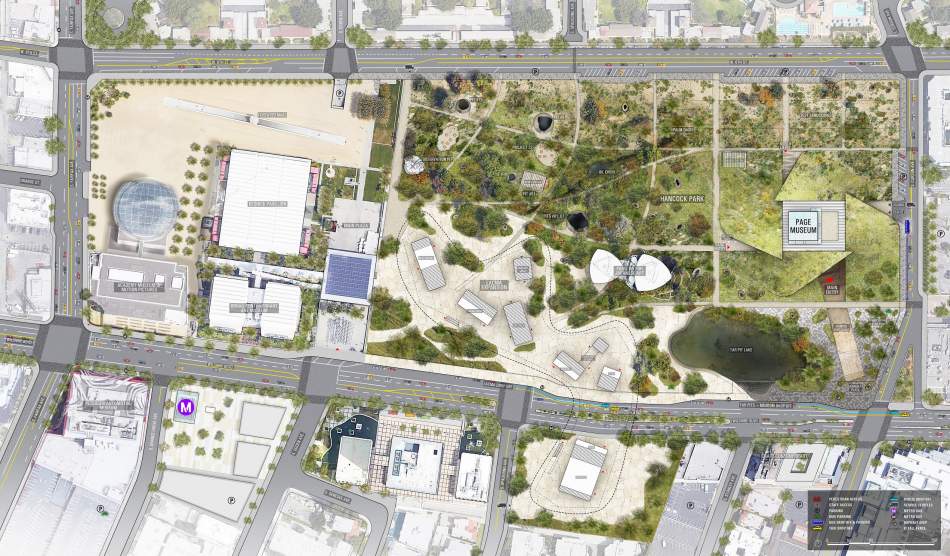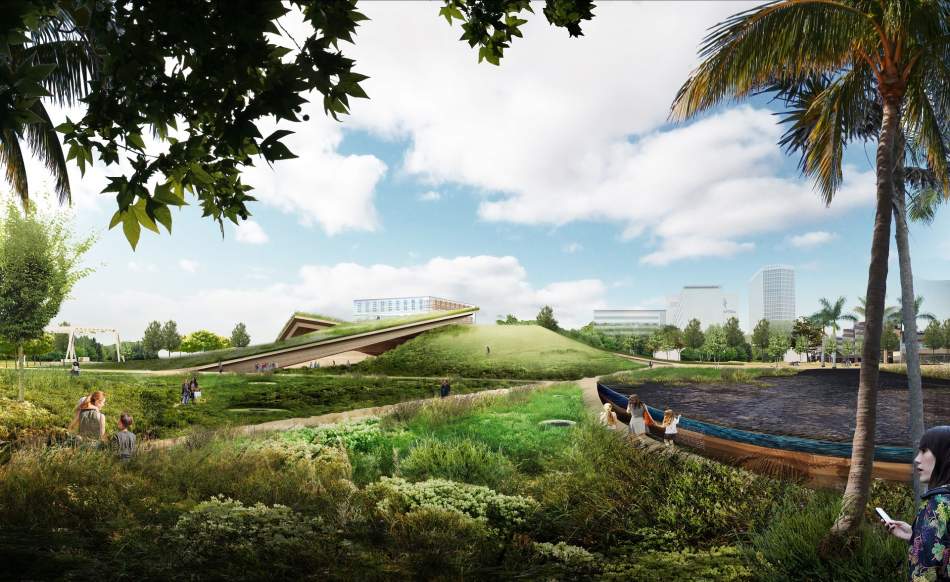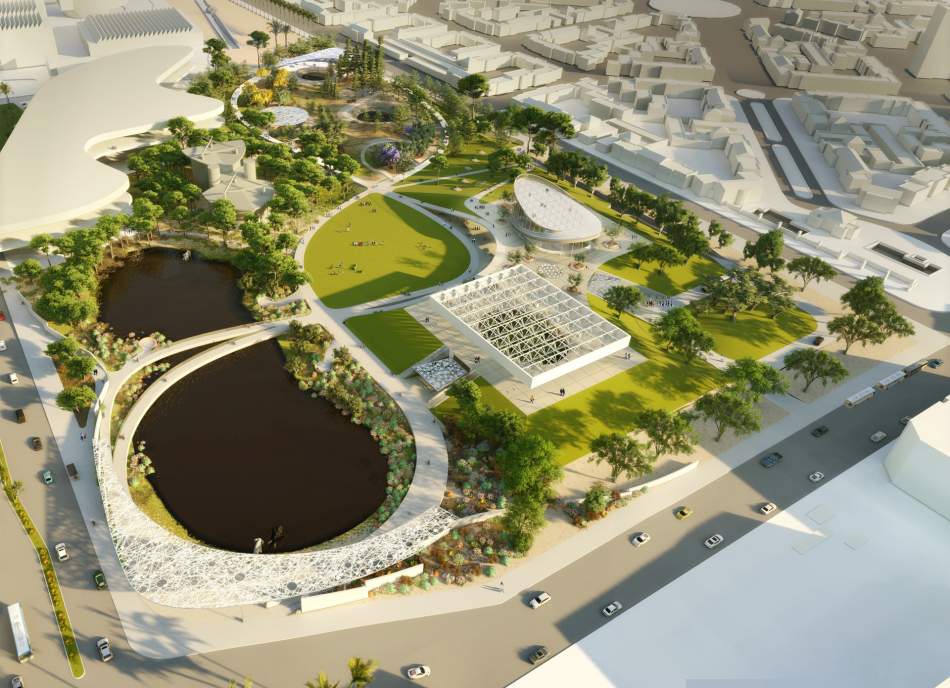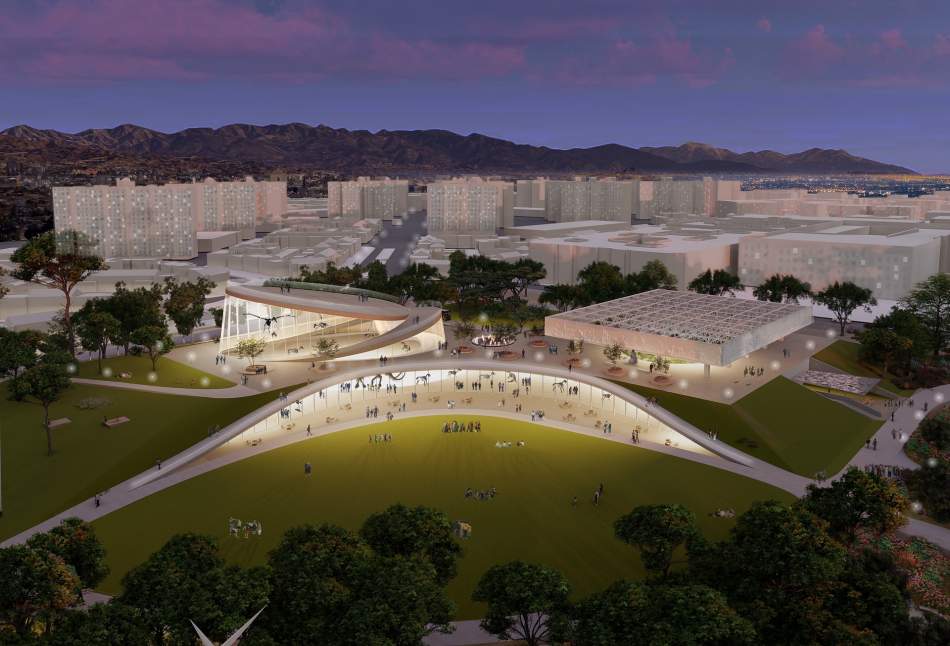At a public presentation yesterday, design concepts were unveiled for a proposed makeover of the La Brea Tar Pits and the George C. Page Museum.
The 12-acre campus, located at the intersection of Wilshire Boulevard and Curson Avenue, has not been renovated since it first opened more than 40 years ago. The Natural History Museums of Los Angeles County, which manages the property, selected three teams earlier this year to develop conceptual master plans for the site:
- Dorte Mandrup (with architect Martha Schwartz Partners, visual designers Kontrapunkt, executive architect Gruen Associates, and engineering firm Arup)
- Diller Scofidio + Renfro (with landscape architects Rana Creek and Walter Hood); and
- Weiss/Manfredi (with graphic designer Michael Beirut, paleobotanist Dr. Carol Gee, artist Mark Dion, and designer Karin Fong of Imaginary Forces).
These three concepts offer us distinct approaches to consider," said NHMLAC President and Director, Dr. Lori Bettison-Varga in a news release. "All of them are deeply thoughtful, and all have responded fully to our stated goals: We want to preserve and enhance community use of Hancock Park while making the collection more visible to the public, showing science in action, and adding to our visitor amenities. All three submissions offer fascinating ideas for creating a more robust and engaging visitor experience while enhancing the Tar Pits as a destination and cultural hub that inspires wonder in our natural and cultural worlds. We look forward to hearing the public’s response to this exciting step toward preparing our campus for the next 50 years of research and public service.”
Dorte Mandrup's design concept envisions the museum as the centerpiece of a park which functions as a "living laboratory."
Plans call for an "extension" of the Page Museum which preserves its main characteristics - especially its clear, rectangular footprint - while improving access from all corners of the park with new boardwalks and pathways and adding new amenities including daylit exhibition spaces and a rooftop garden.
“For the residents of Los Angeles, Hancock Park and the Page Museum are nostalgic places that bring back memories,” said Dorte Mandrup-Poulsen, Founder and Creative Director of the studio Dorte Mandrup. "We will cherish and build on this, as we open up and extend the park and museum to become one big living laboratory. Our proposal interweaves the park and museum, so the moment you step inside the park you become immersed into the story of the Tar Pits. A visit here should be a journey of curiosity, where senses and imagination are instantly awakened. Our hope is that this will bring visitors much closer to the world of natural science, and in turn heighten their understanding of the past, present and future of our planet.”
The Diller Scofidio + Renfro concept imagines the Tar Pits and Hancock Park as a "catalyst for a more synthetic urban growth of [the] Miracle Mile as an alternative to the current piecemeal approach to individual institutions...."
The entire site is pitched as a "perpetual research project to be shared with the project," with including a new glass edge to the Tar Pit Lake, a mobile "dig rig" which could be used for future excavations throughout the park, and a hovering archive block in the museum lobby.
The museum itself would be expanded within itself by reconfiguring its current layout and opening up new points of entry.
"As an urbanized culture, we are rarely conscious of the geological forces that shape the ground we walk (and drive) on. A new master plan for the La Brea Tar Pits and Page Museum offers a unique opportunity to not only heighten awareness of the natural history held underfoot, but also to engender a sense of responsibility towards the role humans play in shaping the environment they inherit,” reads a statement released by Diller Scofidio + Renfro. “A revitalized Hancock Park is conceived to be the connective tissue between existing and new institutions, public spaces, and urban infrastructure. We have taken a ‘light touch’ approach for the next evolution of the Page Museum, infilling underutilized spaces and reconfiguring what is already there to create a more dynamic and efficient hybrid structure that is both building and landscape."
The Weiss/Manfredi project, called "La Brea Loops and Lenses," would create a triple mobius linking all existing elements of the park, creating a "continuously unfolding experience" within Hancock Park.
A one-kilometer path would connect three distinct sections of the park:
- Research and Revelation - which includes the excavation pits and Pleistocene Garden;
- Community and Culture - including the museum and central green area; and
- Spectacle and Urban Fictions - which includes the lake pit and mastodons.
The Page Museum would be renovated, reconfigured, and expanded to allow better visibility of its collection to passersby in the park.
“Weiss/Manfredi’s proposal, ‘La Brea Loops and Lenses,’ redefines Hancock Park and the Page Museum as one continuous experience,” said Founders and Principals Marion Weiss and Michael Manfredi. “The intertwining loops link all the existing site components, enhancing spaces for community and scientific research. The lenses, as framed views throughout the park and museum, reveal the La Brea collection to visitors, bringing the museum to the park, and the park into the public imagination. We are excited to reimagine La Brea and are committed to amplifying this enduring Los Angeles landmark to serve a vibrant community.”
The Natural History Museums of Los Angeles County are expected to announce the winning team before the end of 2019.
The La Brea Tar Pits, billed as the only active paleontological research facility located in a major urban area, has been active since 1913. The Page Museum which sits at the heart of the site opened in 1977.
Plans to renovate both landmarks occur at a time of sweeping change on the Miracle Mile, including a proposed $650-million rebuild of LACMA and the ongoing construction of the Academy Museum of Motion Pictures. The investment in these institutions, coupled with extension of the Purple Line subway, has lead to calls for a more comprehensive plan for public spaces on the Miracle Mile.
- Renovations Planned for La Brea Tar Pits and Page Museum (Urbanize LA)





